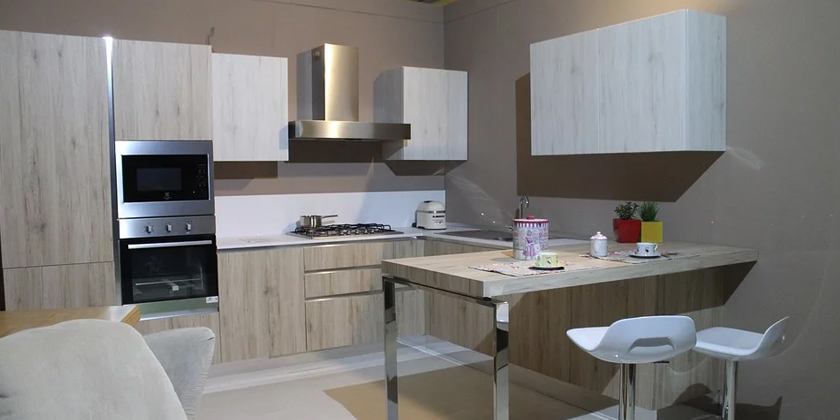Sintered Stone
The stone industry is always innovating new materials. Technological advancements continue to drive new surfaces and products all the time. One of the newer technologies is a material that goes by a variety of names. One of the more often used terms is “sintered stone”. This material offers some specific properties and is used for diverse applications. in this post, we will examine some helpful information regarding sintered stone. We will also discuss some of the qualities that this material has and what they mean for professionals that want to begin offering sintered stone surfaces to customers.
What is Sintered Stone?
Sintered stone is a man made materials that offers a variety of appealing benefits. We will talk about some of the benefits in just a bit. But for now, let’s take a look at why it is called “sintered stone”.
The term sintered stone comes from the name of the process that is used to create this material. The sintered part of the phrase communicates that the material is sintered. The sintering process is not new. In fact, there are other materials that are formed by using the technique of sintering. Examples of this are porcelain and ceramic tile. But what is meant by sintered?
Sintering is a process through which one material is transformed into another using extremely high heat and pressure. The powder that is used in the process can consist of a number of materials. In fact, the material the powder consists of along with the the exact process used are key parts of the recipe. Altering the recipe changes the material that comes out of the process. Thus, you will no doubt find that various sintered materials are called by trademarked names.
Why is Sintered Stone Growing In Popularity?
Sintered materials aren’t necessarily new. However, they are becoming more and more popular for uses in more diverse applications. Sintered stone offers a number of benefits including:
- Heat Resistant
- Extreme Hardness
- Non-porous Surface
- Many Popular Colors
The benefits listed above are just some of the reasons that people are choosing sintered stone to be the material for all sorts of surfaces. Let’s look at the above benefits briefly to see why each one is is appealing.
The Appeal of Sintered Materials
Heat Resistance – the heat resistance available with sintered stone makes it an appealing choice for consumers that prefer to not be concerned with potential harm of setting hot pots and pans on surfaces. Other materials (particularly engineered quartz) are not as resistant to heat as sintered surfaces. Some consumers prefer to have a material that can resist virtually any normal household temperature to which it may be exposed.
Extreme Hardness – having the ability to resist scratching is a key property for a material to have if it is to be used as a countertop. In fact, many other surfaces benefit form being highly durable and resistant to scratches. Flooring, wall cladding, and even outdoor building facades benefit from being highly scratch resistant.
Non-porosity – being non-porous, sintered materials are protected from stain-causing liquids being absorbed into the pores of the stone and staining it. And even though liquids can dry and get stuck on the surface of a sintered stone slab (also known as sheets or panels), it is a surface stain and can be treated easier than a stain that gets into the pores.
Many Colors Available – color selection may not seem to be that important to some, but it is a very practical part of deciding on a material for use in an interior design or architectural project. Sintered stone is available in a wide range of colors and patterns. Some of which even mimic very closely natural stones like marble.
Sintered Material Use & Care
Form the above information, it is easy to conclude that sintered stone is relatively easy to care for and maintain. Since it is non-porous as well as resistant to chemicals, it can be cleaned using a variety of cleaners and solutions. So cleaning is easy.
Since sintered stone is vary hard, it does not easily scratch. This makes it much easier to keep it looking new and beautiful with less effort. It also is easy to use it for wall cladding and even floors. In fact, the heat resistance of sintered stone means that it can be used outside and even in places where rapid temperature change is frequent.
Fabricating Sintered Materials
The benefits that are realized with sintered surfaces are largely a result of the hardness and makeup of the material itself. The durability allows for panels to be very thin and light weight. Because of this, sintered materials must be fabricated using specific methods and procedures. Blades designed to cut porcelain and other sintered materials work the best. There are even diamond blades designed specifically for cutting sintered materials like DEKTON, Lapitec, Neolith, and others.
Fabrication Dust Removal
Another factor that goes into working with sintered materials is keeping the air as clean as possible. Just as you would when working with other stone materials, having an effective dust collector set up to remove the particles from the work area is important. Additionally, filtering the stone water that is produced in the fabrication shop is also just as important in a shop that fabricates sintered surfaces. This can be done using a number of our systems for filtering water from sintered stone fabrication shops.
In the end, sintered stone is a popular material because of the benefits that it offers. It also is a unique material that requires specific knowledge. So, fabrication professionals acquire special knowledge about working with it. Training includes familiartiy with best practices by the maker of the specific material that you are considering. Because of the benefits associated with sintered surfaces, it will likely continue to be a prominent material when it comes to use as a durable and high quality material for many uses in a number of environments.

